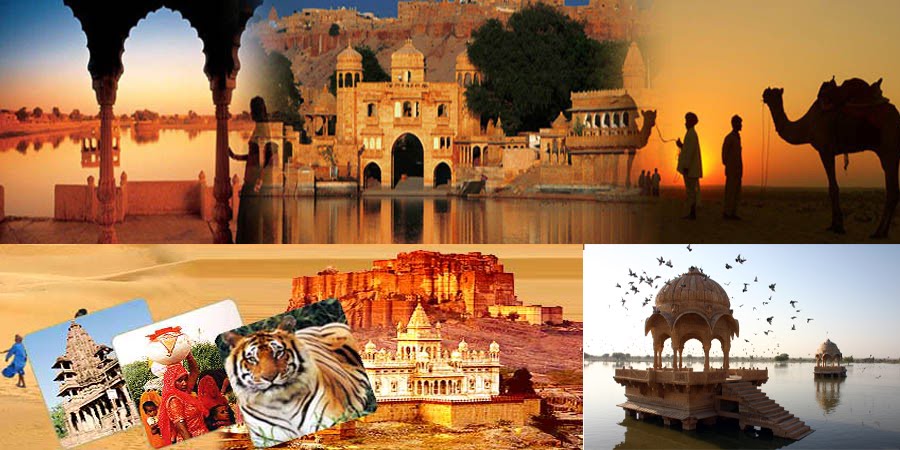Leh-Ladakh
 Planning a trip to Leh-Ladakh is an exciting adventure, as this region offers some of the most breathtaking landscapes, serene monasteries, and thrilling experiences in India. Here’s a comprehensive guide to help you plan your Leh-Ladakh tour:
Planning a trip to Leh-Ladakh is an exciting adventure, as this region offers some of the most breathtaking landscapes, serene monasteries, and thrilling experiences in India. Here’s a comprehensive guide to help you plan your Leh-Ladakh tour:Best Time to Visit
- Summer (May to September): The most popular time to visit Leh-Ladakh. The weather is pleasant, roads are accessible, and you can enjoy all the major attractions. The landscape during this time is vibrant, with blooming flowers and clear skies.
- Winter (October to April): This is the time for those who love extreme cold and snow. The region experiences heavy snowfall, and many roads (like the Manali-Leh highway) are closed. However, winter also offers the unique experience of the Chadar Trek and frozen lakes.
Duration of the Trip
A typical Leh-Ladakh trip should ideally be 7-10 days long to cover the main attractions without rushing.
How to Reach
- By Air: The most convenient way to reach Leh is by flying into Kushok Bakula Rimpochee Airport in Leh. Direct flights are available from Delhi, Mumbai, and other major cities.
- By Road:
- Manali to Leh: This route is open from June to mid-October and offers stunning landscapes, including crossing the Rohtang Pass and Baralacha Pass.
- Srinagar to Leh: This route opens in May and closes by November. It’s a slightly easier drive compared to the Manali route and takes you through Kargil and Drass.
Acclimatization
Leh is located at an altitude of around 11,500 feet. Acclimatization is crucial to avoid altitude sickness. It’s advisable to take it easy for the first couple of days after arriving in Leh, avoiding any strenuous activities.
Suggested Itinerary
Day 1: Arrival in Leh
- Activities: Rest and acclimatize. Take a short walk around Leh Market, Shanti Stupa, and Leh Palace if you’re feeling up to it.
- Overnight: Leh
Day 2: Exploring Leh
- Visit:
- Hemis Monastery: The largest and wealthiest monastery in Ladakh.
- Thiksey Monastery: A beautiful monastery resembling the Potala Palace in Lhasa.
- Shey Palace: The former summer palace of the kings of Ladakh.
- Overnight: Leh
Day 3: Leh to Nubra Valley (via Khardung La)
- Highlights: Drive to Nubra Valley via Khardung La (one of the highest motorable passes in the world at 18,380 feet). Explore Diskit Monastery, known for its giant Buddha statue, and the sand dunes of Hunder, where you can enjoy a camel safari on the double-humped Bactrian camels.
- Overnight: Hunder or Diskit
Day 4: Nubra Valley to Pangong Tso
- Route: Drive from Nubra Valley to Pangong Tso via Shyok or Wari La Pass.
- Highlights: Pangong Tso (Pangong Lake) is one of the most beautiful lakes in the world, known for its changing colors. Spend the evening by the lake.
- Overnight: Camps by Pangong Lake
Day 5: Pangong Tso to Leh
- Return to Leh: Take the same route back or via Chang La Pass.
- Visit en route: Hemis Monastery if not covered on Day 2.
- Overnight: Leh
Day 6: Leh to Tso Moriri Lake
- Drive: A long drive to Tso Moriri, another stunning high-altitude lake.
- Highlights: The lake is less commercialized than Pangong and offers a tranquil experience. Visit the Korzok Monastery by the lake.
- Overnight: Camps near Tso Moriri
Day 7: Tso Moriri to Leh
- Return to Leh: Visit Tso Kar Lake on the way, known for its salt deposits and birdlife.
- Overnight: Leh
Day 8: Leh to Lamayuru and Alchi
- Drive: Visit the moon-like landscapes of Lamayuru and the ancient Alchi Monastery, known for its stunning frescoes.
- Overnight: Leh
Day 9: Departure from Leh
- Fly Back: Take an early morning flight back to your city.
Permits
- Inner Line Permits (ILP): Required for Indian tourists visiting Nubra Valley, Pangong Lake, Tso Moriri, etc. These can be obtained from the DC office in Leh or online.
- Protected Area Permits (PAP): Required for foreign nationals visiting the above areas.
Packing Essentials
- Clothing: Layered clothing for varying temperatures, thermal wear, waterproof jackets, gloves, and woolen socks.
- Footwear: Comfortable trekking shoes.
- Sun Protection: Sunscreen, sunglasses, hats, and lip balm.
- Medicines: Basic first aid, Diamox (for altitude sickness), and personal medications.
- Other Essentials: Reusable water bottle, snacks, power bank, and camera.
Accommodation
Leh-Ladakh offers a range of accommodations from luxury hotels to guesthouses and camps. In Leh, you can find good hotels, while in remote areas like Nubra Valley and Pangong, you’ll mostly find camps and basic guesthouses.
Food
- Cuisine: Ladakhi cuisine includes dishes like Thukpa (noodle soup), Momos (dumplings), and Skyu (a traditional Ladakhi pasta dish). Most places also offer North Indian, Tibetan, and Continental food.
- Eating Out: Try local cafes in Leh town, such as the Tibetan Kitchen, Bon Appetit, and Gesmo Restaurant.
Safety Tips
- Altitude Sickness: Acclimatize properly and stay hydrated.
- Driving: If self-driving, be cautious of road conditions, especially on mountain passes.
- Local Etiquette: Respect local customs and traditions, especially in monasteries.
Leh-Ladakh is a land of surreal landscapes and profound tranquility. With proper planning, you can enjoy a once-in-a-lifetime experience in this beautiful part of India.




0 comments:
Post a Comment